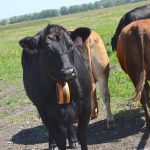Micro-propagation | Saskatoon company uses laboratory to produce millions of seedlings
Food from a petri dish? It doesn’t sound appetizing, but scientifically speaking, the petri dish may be a good place to give food a start.
Prairie Plant Systems, a biotech company based in Saskatoon, is using lab technology and plant cloning to produce sour cherry, saskatoon berry and haskap seedlings for the local and export market.
The goal, according to chief executive officer Brent Zettl, is to propagate new fruit varieties more quickly and accurately to feed a growing interest in prairie orchards and on-farm diversification.
Read Also

Why feds imposed EV tariffs
Moe and Kinew have a fight on their hands when it comes to eliminating the EV tariff. Canada has to worry about pissing off the U.S. and Mexico and hundreds of thousands of auto workers.
“This is where we think the future of agriculture is going to be,” he said. “As water resources become further limited in the southern hemisphere, the northern hemisphere is going see more demand for fruit production.”
Micro propagation begins by cutting small pieces from the parent plant. These cuttings are “planted” in an opaque jello-like substrate that contains all the nutrients they need to grow without a root system.
The substrate “recipe” is different for each species.
“Plants don’t talk, of course, so it’s trial and error,” said Zettl. “There are about 30 constituents that go into making up that media.”
When the seedlings reach about 10 centimetres, they are cut into smaller pieces and replanted in the agar substrate. By repeating the process over and over, thousands and even millions of little seedlings can be produced from the parent plant.
“It’s a form of cloning,” said Zettl. “Each piece will be genetically identical to the one we started with.”
Once sufficient seedlings are produced, they are planted in soil and encouraged to root, first in a warm mist tent, where they acclimatize and grow a thicker skin, and then into the greenhouse to mature.
“When they come to us, they don’t have a cuticle so they need near 100 percent humidity,” said greenhouse supervisor Derek Tiessen. “Without that transition, they would all die in the greenhouse within a few days.”
Using these lab technologies, new fruit varieties can be propagated more quickly and more reliably than with traditional methods of grafting or growing fruit from seed, which isn’t true to the parent plant.
As well, the petri dish environment is disease free and not subject to seasonal constraints.
With micro propagation, Zettl said a new fruit variety can be grown in sufficient volume, quality and consistency to take it to market in just one year.
“This system is being used quite extensively around the world for orchids and ornamental trees. It’s the most common method of cloning plants today and the fastest way to build up a population.”
The parent plants propagated by PPS are obtained from the University of Saskatchewan’s prairie fruit breeding program, where plant scientists have created several new fruit varieties through selection and cross breeding, using stock material from Canada and northern climates around the world.
The newest of these fruits is haskap, also known as blue honeysuckle, a plump bluish berry that is popular in Japan as a medicinal food because it is high in nutrients such as vitamin C, calcium and antioxidants.
The U of S sour cherry is smaller and tarter than the big meaty cherries grown in British Columbia, but is higher in sugar content and therefore more suited to pies, jellies and juice.
The granddaddy of prairie berries, the saskatoon, was bred for U-pick orchards in the 1980s and 1990s and remains a popular orchard fruit as new markets are developed for saskatoons in the food processing industry.
In the orchard, haskap is the first to ripen, in late June, well before saskatoons in mid-July and cherries in August.
A U of S alumnus, Zettl started PPS in 1988 while completing a degree in agriculture. Methods of tissue culture were being developed at that time and he saw an opportunity to use these techniques to propagate saskatoon berries.
However, there wasn’t enough demand for saskatoons to keep the fledgling company going, so Zettl used the technology to produce other kinds of plants for other markets. This included medical marijuana and pharmaceutical plants, which were previously grown by PPS in a defunct underground mine at Flin Flon, Man.
“We’ve moved beyond just cloning plants for agriculture. We use the same agronomic features, but in a contained way in the mines,” he said.
As for the fruit, Zettl is bullish on the future of haskap.
“We think people are going to want to eat them, and as a consequence, people are going to have to grow them. Those growers are going to need plants.”














